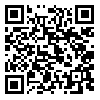1. Aldao, A., Sheppes, G., & Gross, J. J. (2015). Emotion regulation flexibility. Cognitive Therapy and Research, 39(3), 263-78. doi: 10.1007/s10608-014-9662-4 [
DOI:10.1007/s10608-014-9662-4]
2. Beek, A. T., Epstein, N., Brown, G., & Steer, R. A. (1988). An inventory for measuring clinical anxiety: Psychom-etrie properties. Journal of Consulting and Clinical Psychology, 56(6), 893-7. doi: 10.1037//0022-006x.56.6.893 [
DOI:10.1037//0022-006X.56.6.893]
3. Bhasin, S. K., Sharma, R., & Saini, N. K. (2010). Depression, anxiety and stress among adolescent students be-longing to affluent families: A school based study. Indian Journal of Pediatrics, 77(2), 161-5. doi: 10.1007/s12098-009-0260-5 [
DOI:10.1007/s12098-009-0260-5]
4. Birami, M., Akbari, E., Ghasempoor, A., & Azimi, Z. (2012). [An Investigation of anxiety sensitivity, meta wor-ry and components of emotion regulation in students with and without social anxiety (Persian)]. Clinical Psy-chology Studies, 2(8), 43-69.
5. Ehret, A. M., Kowalsky, J., Rief, W., Hiller, W., & Berking, M. (2014). Reducing symptoms of major depressive disorder through a systematic training of general emotion regulation skills: Protocol of a randomized controlled trial. BMC Psychiatry, 14(1), 20. doi: 10.1186/1471-244x-14-20 [
DOI:10.1186/1471-244X-14-20]
6. Ghaednia, A. (2013). [The effectiveness of training emotional regulation strategies in the process of temptation, cope cognitive, and emotional domains of the impulsivity of people with substance abuse: A single subject (Persian)] (MSc. thesis). Tehran: Khrazmi University.
7. Ghasempour, A & Fallah, A. (2014). [Effectiveness of emotional regulation strategies training for fear of positive evaluation of male adolescences suffering from social phobia disorder (Persian)]. Journal of Community Health, 8(4), 59-67.
8. Ghasempour, A. (2012). [Predicting death anxiety on the basis of emotion cognitive regulation strategies (Per-sian)]. Knowledge and Research in Clinical Psychology, 13(48), 63-70.
9. Goldin, P. R., Lee, I., Ziv, M., Jazaieri, H., Heimberg, R. G., & Gross, J. J. (2014). Trajectories of change in emo-tion regulation and social anxiety during cognitive-behavioral therapy for social anxiety disorder. Behaviour Re-search and Therapy, 56, 7-15. doi: 10.1016/j.brat.2014.02.005 [
DOI:10.1016/j.brat.2014.02.005]
10. Gratz, K. L., & Gunderson, J. G. (2006). Preliminary data on an acceptance based emotion regulation group in-tervention for deliberate self harm among women with borderline personality disorder. Behavior Therapy, 37(1), 25-35. doi: 10.1016/j.beth.2005.03.002 [
DOI:10.1016/j.beth.2005.03.002]
11. Gross, J. J., & John, O. P. (2003). Individual differences in two emotion regulation processes: Implications for af-fect, relationships, and well being. Journal of Personality and Social Psychology, 85(2), 348-62. doi: 10.1037/0022-3514.85.2.348 [
DOI:10.1037/0022-3514.85.2.348]
12. Hassani, J., Azadfallah, P., Rasulzadeh Tabatabaie, K., Ashayeri, H. (2008). Evaluation of cognitive emotion regulation strategies on the basis of neuroticism and extraversion. Advances in Cognitive Science, 10(4), 1-13.
13. Jazaieri, H., McGonigal, K., Jinpa, T., Doty, J. R., Gross, J. J., & Goldin, P. R. (2014). A randomized controlled trial of compassion cultivation training: Effects on mindfulness, affect, and emotion regulation. Motivation and Emotion, 38(1), 23-35. doi: 10.1007/s11031-013-9368-z [
DOI:10.1007/s11031-013-9368-z]
14. Kaplan, H. I., & Sadock, B. J. (1988). Synopsis of psychiatry: Behavioral sciences clinical psychiatry [M. Arjmand., F. Rezaie., & N. Faghani Jadidi, Persian trans]. Tehran: Arjmand Press. [
DOI:10.1080/00332747.1988.11024389]
15. Kaviani, H., & Mousavi, A. S. (2008). Psychometric properties of the Persian version of Beck Anxiety Inventory (BAI). Tehran University Medical Journal, 66(2), 136-140.
16. Khanzadeh, M., Saidiyan, M., Hosseinchary, M., & Edrissi, F. (2012). [Factor structure and psychometric feature of difficulties in emotional regulation scale (Persian)]. Journal of Behavioral Sciences, 1(6), 87-96.
17. Mash, E., & Wolfe, D. (2012). Abnormal child psychology. Massachusetts: Cengage Learning.
18. Narimani, M., Ariapooran, S., Abolghasemi, A., & Ahadi, B. (2011). [The comparison of the effectiveness of mindfulness and emotion regulation training on mental health in chemical weapon victims (Persian)]. Journal of Clinical Psychology, 2(4), 61-72.
19. Rabie, M., Zerehposh, A., Palahang, H., & Zarei, H. (2013). [Relationship between components of cognitive emo-tion regulation and anxiety disorders in child and adolescent (Persian)]. Journal of Research in Behavioural Sciences, 11(5), 363-74.
20. Wetherell, J. L., & Gatz, M. (2005). The Beck Anxiety Inventory in older adults with generalized anxiety disor-der. Journal of Psychopathology and Behavioral Assessment, 27(1), 17-24. doi: 10.1007/s10862-005-3261-3 [
DOI:10.1007/s10862-005-3261-3]








